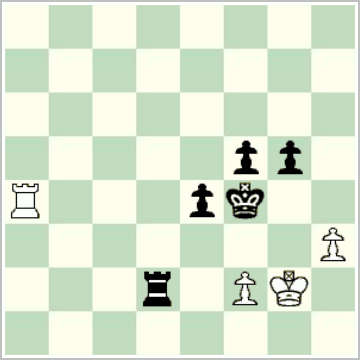The last round of the recent Sligo Spring Tournament Masters featured an interesting ending on board 1 between Lara Putar and the tournament winner, Ukrainian WGM Evgeniya Doluhanova.

Lara Putar – Doluhanova, Sligo Spring Tournament Masters 2022
White to play
The diagram shows a critical position from the game and also, curiously, from the famous game Duras – Capablanca, New York 1913.
A similar position, with colours reversed and rooks and one king in different places, arose in Capablanca – Yates, Hastings 1930-31, and this version is usually used as the model for how the stronger player wins with this pawn configuration. Capablanca’s breakthrough in the first game was incorrect, and allowed Duras an opportunity to escape with a draw. Even the second game featured some slips, including one that allowed Yates an opportunity to achieve a drawn position, though Capablanca’s basic method was sound.
There were no such flaws in Doluhanova’s play. “The winning plan is a rook transfer to the eighth rank followed by f4-f5-f6+. If the Black rook takes aim at the e5-pawn, White defends it with the rook from e8.” Dvoretsky (2008). This basic plan worked smoothly here.
The ending has many subtleties and difficulties, and the official verdict has changed in numerous ways down the years, with some discoveries appearing in the last ten years. Though the diagrammed position is lost for White with best play, the sternest defence is tricky to overcome. The playable game provides relevant links.
[Click to replay the full game. Note that, as usual, clicking on the triangle on the right below the board steps into variations.]
